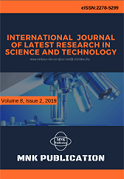DOI:10.29111/ijlrst ISRA Impact Factor:3.35, Peer-reviewed, Open-access Journal
Research Paper Open Access
International Journal of Latest Research in Science and Technology Vol.3 Issue 4, pp 109-118,Year 2014
Correspondence should be addressed to :
Received : 09 July 2014; Accepted : 25 July 2014 ; Published : 31 August 2014

| Download | 125 |
|---|---|
| View | 178 |
| Article No. | 10364 |
Based on the complex dependence of the mean temperature difference we determine the optimal value of exit temperature when cooling the process fluid for characteristic heat exchangers with a tube bundle and a shell, in which the fluid passes once through the shell and twice through the tubes. The function of the total annual costs whose components are investment and operation costs was adopted as the function of optimization. In this respect, a detailed economic analysis of all the costs at the annual level was conducted and the correlation with the parameter which is optimized was established. Using mathematical transformations of thermodynamic relations, a suitable function of total costs was obtained and thoroughly investigated through mathematical analysis. The optimal value of exit temperature of the heat transfer fluid was obtained by minimizing the complex function of total annual costs based on the basic theorem of differential calculus. The boundary function and the domain of the function of costs, considering its real domain, were also taken into consideration. The method presented was verified on a characteristic example of a tube-bundle heat exchanger containing a shell of (1-2) type with parallel and counter flow. The obtained complex function of optimization was solved using a suitable numeric mathematical method, with the support of a computer program, considering the fact that the parameter which is optimized could not be expressed explicitly. Apart from the analytical method, the graphical method was also used in order to obtain a more efficient solution and to determine the extremum of function. Such techno-economical approach to the problem, after determining the optimal temperature, has enabled the calculation of a series of parameters which are necessary for designing the heat exchanger observed. The paper also presents some of the possibilities for the application of the model presented.
Copyright © 2014 Branko Pejović et al. This is an open access article distributed under the Creative Commons Attribution 4.0 International (CC BY 4.0) license which permits unrestricted use, distribution, and reproduction in any medium, provided the original work is properly cited.
Branko Pejović, Goran Tadić, Vladan Mićić,Milorad Tomić, Sabina Begić, Pero Dugić, Zoran Petrović, Vojislav Aleksić , " New Optimization Model For Characteristic Temperature In Heat Exchangers With Parallel-counter Flow Design From The Aspect Of Costs ", International Journal of Latest Research in Science and Technology . Vol. 3, Issue 4, pp 109-118 , 2014

MNK Publication was founded in 2012 to upholder revolutionary ideas that would advance the research and practice of business and management. Today, we comply with to advance fresh thinking in latest scientific fields where we think we can make a real difference and growth now also including medical and social care, education,management and engineering.

We offers several opportunities for partnership and tie-up with individual, corporate and organizational level. We are working on the open access platform. Editors, authors, readers, librarians and conference organizer can work together. We are giving open opportunities to all. Our team is always willing to work and collaborate to promote open access publication.

Our Journals provide one of the strongest International open access platform for research communities. Our conference proceeding services provide conference organizers a privileged platform for publishing extended conference papers as journal publications. It is deliberated to disseminate scientific research and to establish long term International collaborations and partnerships with academic communities and conference organizers.